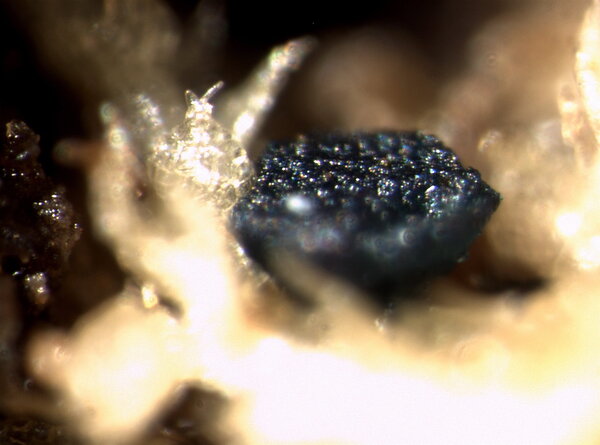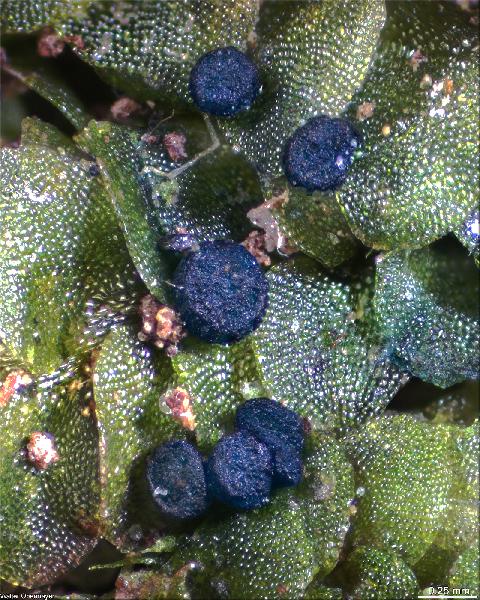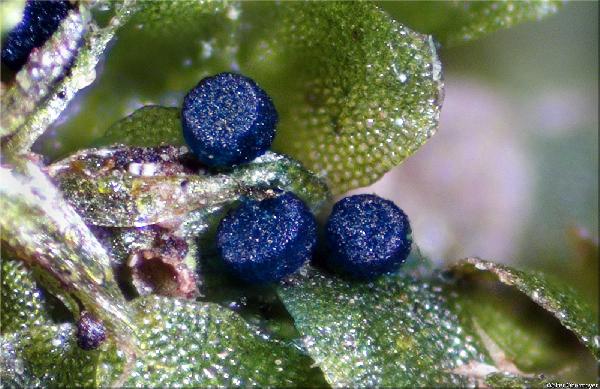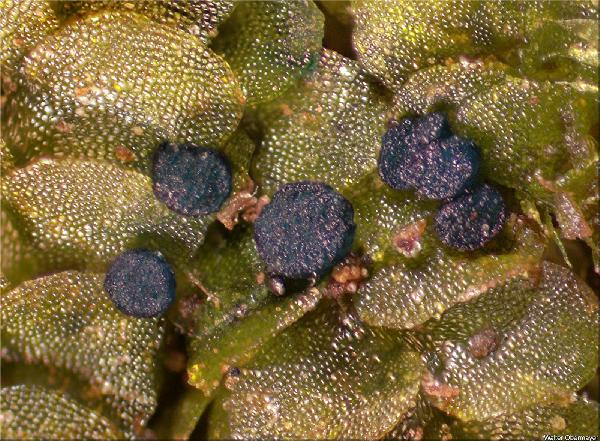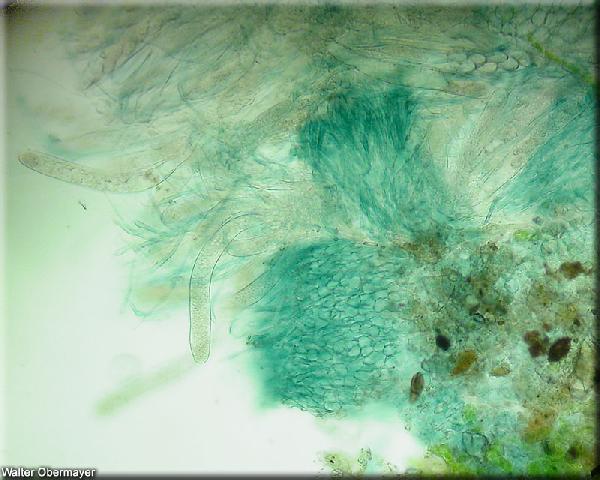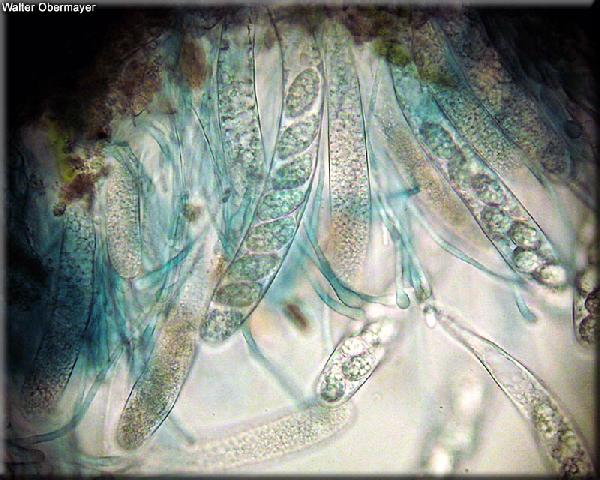Mniaecia jungermanniae (Fr.) Boud.
Hist. Class. Discom. Eur: 99, 1907. Basionym: Peziza jungermanniae Fr. - Syst. Mycol., 2: 144, 1822.
Synonyms:
Distribution: N - Frl (Tretiach 2004). C - Tosc (Benesperi & al. 2007).
Description: Thallus immersed in leaflets of liverworts, not lichenized and not apparent. Apothecia rounded, sessile, dark blue to bright blue-green, rarely pale blue-green when wet, almost black when dry, 0.2-0.6(-1) mm across, usually arranged in larger clusters, with a flat to finally slightly convex disc and a thin, slightly raised, poorly evident margin. Proper exciple blue-green, of vertically arranged, globose to slightly angular, 7-16 μm wide cells forming a textura globulosa or globulosa-angularis; epithecium blue-green, N-; hymenium colourless, 100-150(-180) μm high, I-, K/I-; paraphyses 1.5-3 μm thick, simple or forked in upper part, the apical cells distinctly clavate, up to 7(-8) μm wide, blue-green piogmented, some paraphyses often longer than the asci; hypothecium colourless. Asci 8-spored, cylindrical-clavate, with a thick, non-amyloid apical dome containing a cylindrical tube, 136-160(-195) x 19-22 μm. Ascospores 1-celled, hyaline, ellipsoid to pyriform, (14-)16-22(-24) x 8-12(-13) μm, filled with many oil droplets, without a distinct perispore, at first uniseriately, then biseriately arranged in the asci. Photobiont absent. Spot tests: all negative. Chemistry: without lichen substances.Note: this endophytic fungus is confined to small liverworts growing in humid situations over siliceous substrata, belonging to the genera Calypogeia, Cephalozia, Cephaloziella, Diplophyllum, Jungermannia, Lepidozia, Lophozia, Lophocolea, and on Nardia scalaris. The blue-green apothecia are easily observable in the moist state, whereas in the dry state the blackish apothecia are hardly visible. For further information see De Sloover (2001), Czarnota & Hernik (2013b), and Egertová & al. (2016).
Growth form: Fungus
Substrata: soil, terricolous mosses, and plant debris
Reproductive strategy: mainly sexual
Commonnes-rarity: (info)
Alpine belt: absent
Subalpine belt: extremely rare
Oromediterranean belt: absent
Montane belt: extremely rare
Submediterranean belt: absent
Padanian area: absent
Humid submediterranean belt: extremely rare
Humid mediterranean belt: absent
Dry mediterranean belt: absent

Predictive model
Herbarium samples
Growth form: Fungus
Substrata: soil, terricolous mosses, and plant debris
Reproductive strategy: mainly sexual
Commonnes-rarity: (info)
Alpine belt: absent
Subalpine belt: extremely rare
Oromediterranean belt: absent
Montane belt: extremely rare
Submediterranean belt: absent
Padanian area: absent
Humid submediterranean belt: extremely rare
Humid mediterranean belt: absent
Dry mediterranean belt: absent

Predictive model
| Herbarium samples |
 INDEX FUNGORUM
INDEX FUNGORUM
 GBIF
GBIF
 DOLICHENS
DOLICHENS

